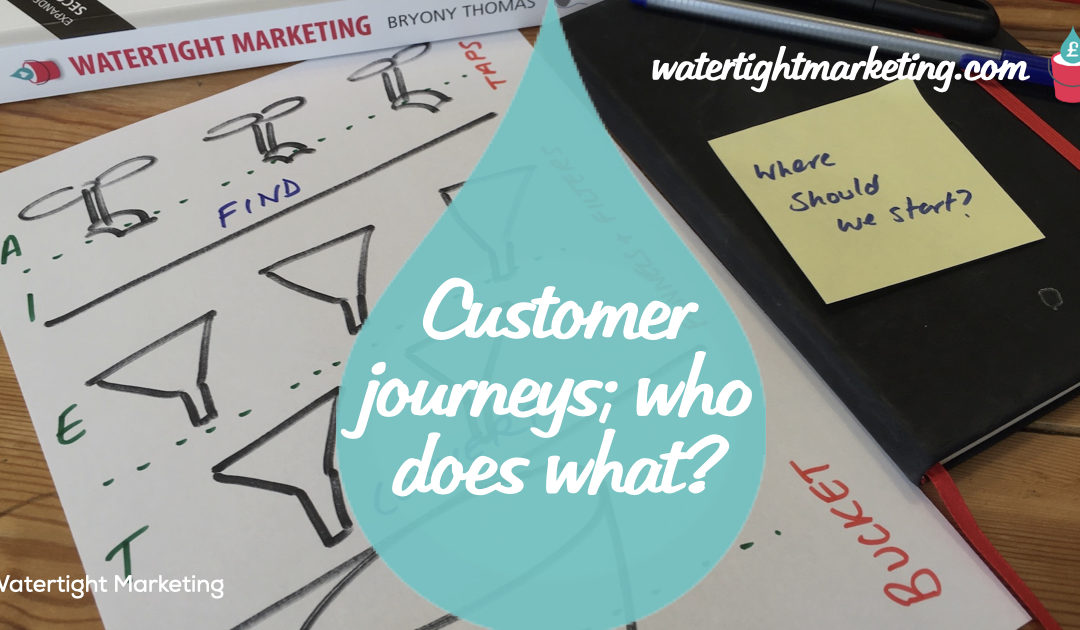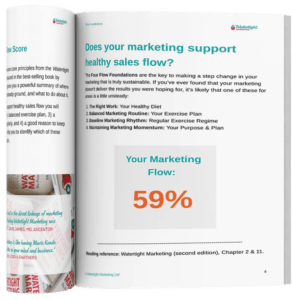Reading Time: 8 Minutes
In various forms, I get asked the difference between sales and marketing almost weekly. Underlying this question is the oft cited discontent between the disciplines, and a desire to get them working more harmoniously together. In answering this question, I have to also bring in service – because what we’re talking about here is supporting an end-to-end customer journey. ~ Bryony Thomas, Author | Watertight Marketing
In my previous post looking at getting sales and marketing to play nicely together, I talked about the most common (and most wasteful) way of structuring marketing sales and service across a customer journey as a relay, where a customer is passed from one to the next.
The customer journey as a relay race…
Typically, you’ll see many businesses define the three functions by ‘ownership’ of different parts of the process, where:
- Marketing – lead generation, responsible for the first couple of steps os a customer journey (Taps)
- Sales – conversion of interested parties into paying customers, responsible for the middle part of the journey (Funnels & Filters)
- Service – delivering what was bought, responsible for the bottom part of the process (Bucket)
The problem with this set up is, like actual relay races, people drop the baton in the handover. There’s also often a change in style and pace at each stage, that means if you’re the baton (customer) it all feels a bit disjointed.
I can agree that mapping functions to these phases is often true in terms of weighting by time spent on each area. I certainly do not agree that this is the correct weighting by contribution or importance. Each of these three disciplines have critical contributions to make across the whole customer journey. And, if they don’t, you won’t get the flow you’re looking for in your business.
The customer journey responsibility heat-map
The Watertight Marketing methodology is centred on a replacement of the ubiquitous sales funnel image and metaphor, with a better picture of a Bucket, Funnels & Filters and Taps. One of the benefits of this image, is that it immediately reverses the focus where ‘filling the funnel’ is seen as primary, to working from the bottom up… where lead generation is literally the last priority of the customer journey.
In terms of roles and responsibilities, we like to present this as a heat-map, where all three disciplines have responsibility for the whole process, but with a different emphasis.
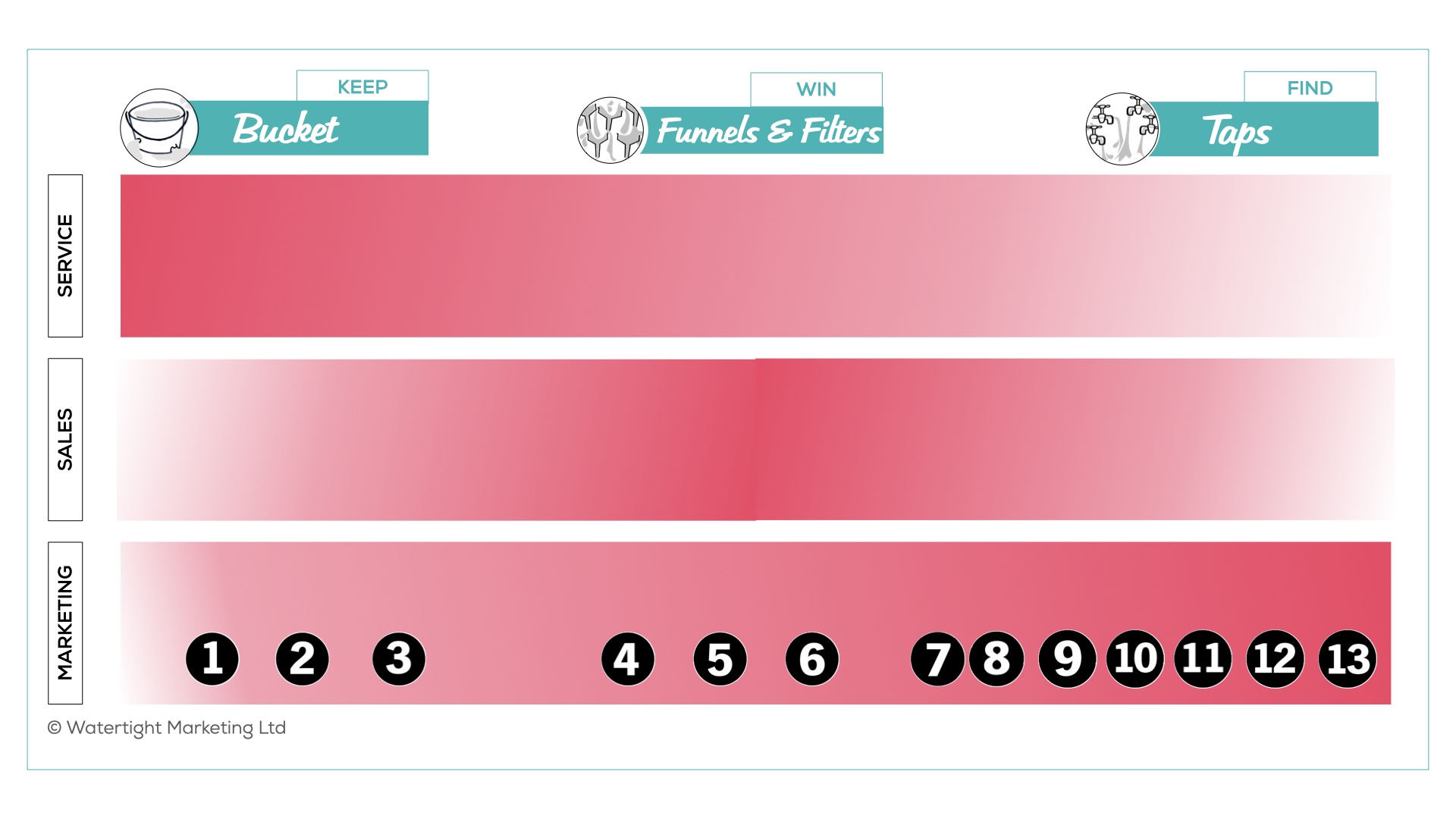
From a marketing perspective, we then use our Touchpoint Leaks™ model to define 13 project areas that need to be led by marketing, in order of priority from the bottom up. Indeed, we find that projects 1-6 are the big ones strategically, whilst 7-13 are pretty straightforward, but often the most visible and time-consuming.
What we often find is that because the tasks in the Taps area are the most visible aspects of marketing, the rest of the business often perceive that this is what marketing is. Shifting this perception can be critical to getting those all-important elements downstream right. This is what make the visible stuff worth doing in the first place. (Service and Sales will, of course, have a similar project list, I’ve just never written book on that!)
Creating a Watertight Business Bucket…
Effective marketing shines a light on the truth. This means that what you deliver to customers needs to be excellent. Getting great sales results starts with having something good to sell. Marketing, sales and service all need to be involved with proposition development to ensure that what you have to sell is what customers want, can be brilliantly demonstrated and delivered well.
Once this is done, there are three specific projects, that sit very much in the remit of a marketer, that mean that customers are supported from initial purchase through to loyalty.
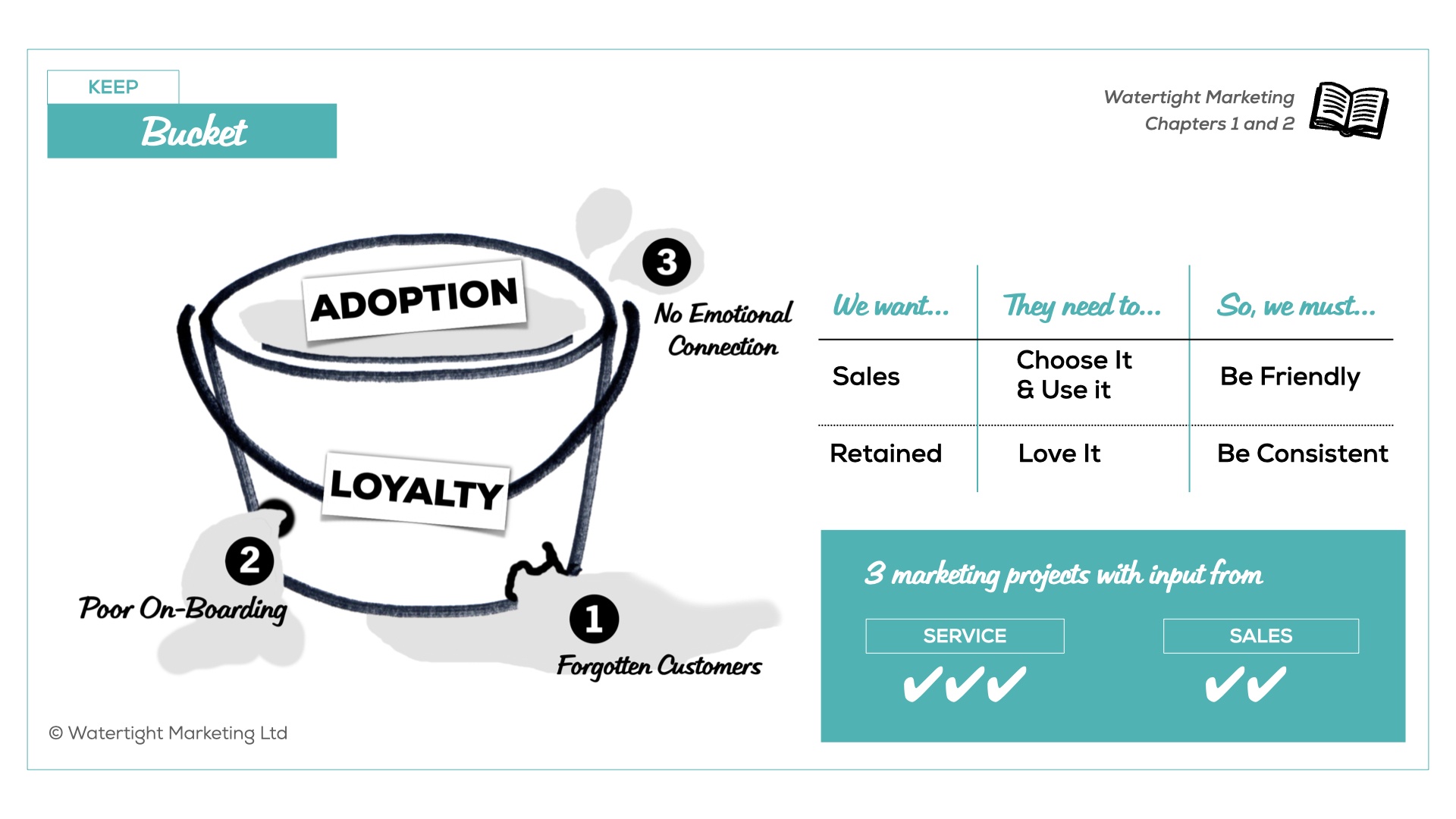
Implementing effective Funnels & Filters…
At the middle stage of the process, it’s essential that service stays involved to help sales people demonstrate how the purchase would be delivered, and showcase the service standards to those in trial. From a marketing perspective, it’s my belief that a salesperson reaching for a blank sheet of paper is a salesperson that’s been let down by marketing.
The three disciplines need to work closely together to create effective tools that sales people can use to evidence the products, to convince critical third parties, and to enable a potential customer to get a sense of what it would be like to be a customer before they are one.
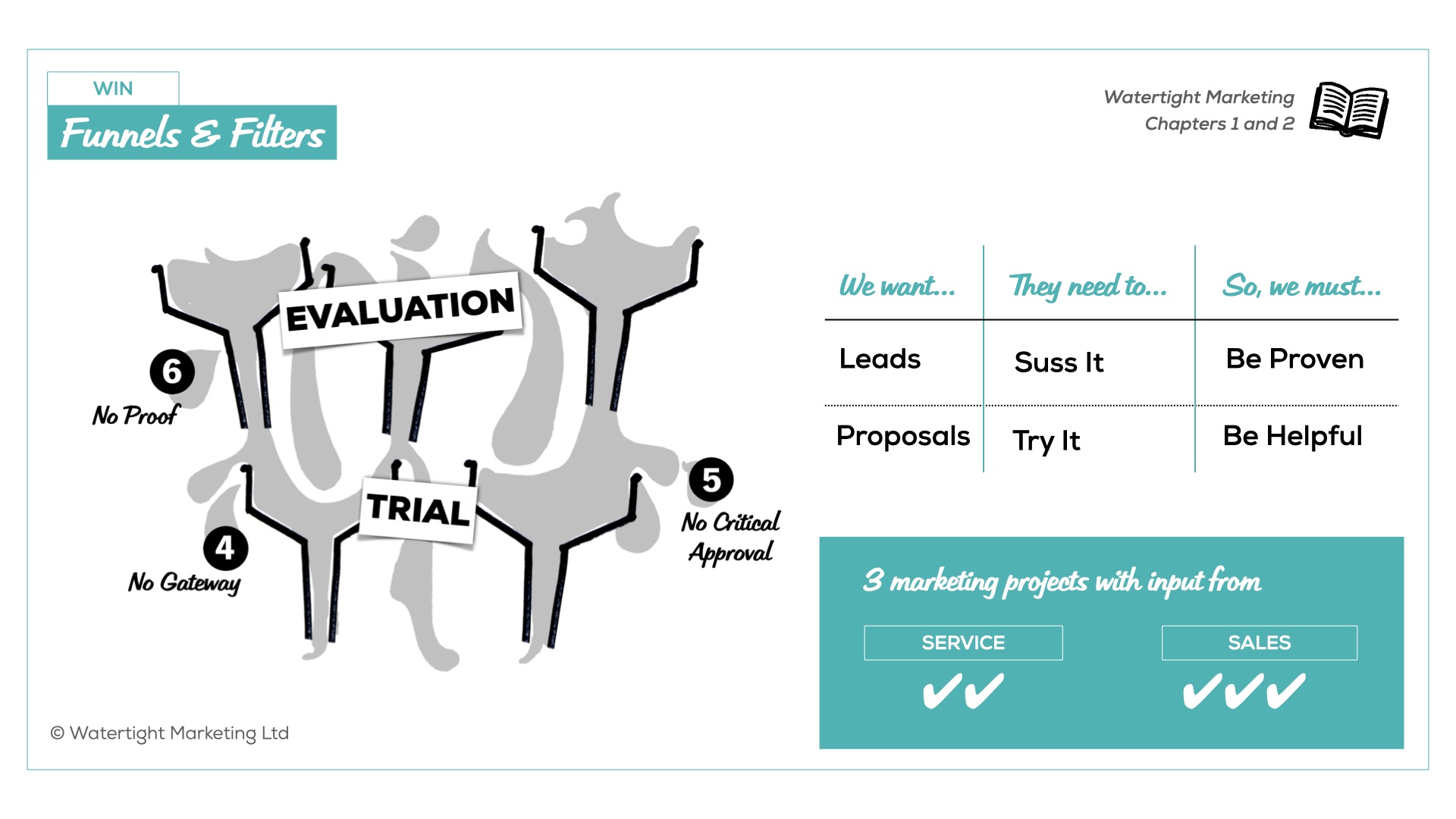
Turning the Taps on…
Then we get to what most people think of as marketing… going out to the world to find people who might be interested.
Again, there’s a role here for everyone. The content that allows marketers to get the word out very often comes from those providing the service. The outreach and networking that creates high quality leads is often best done by experienced salespeople. Lead generation that is not enthusiastically supported by contribution from service and sales is never going to be as effective as a team effort.
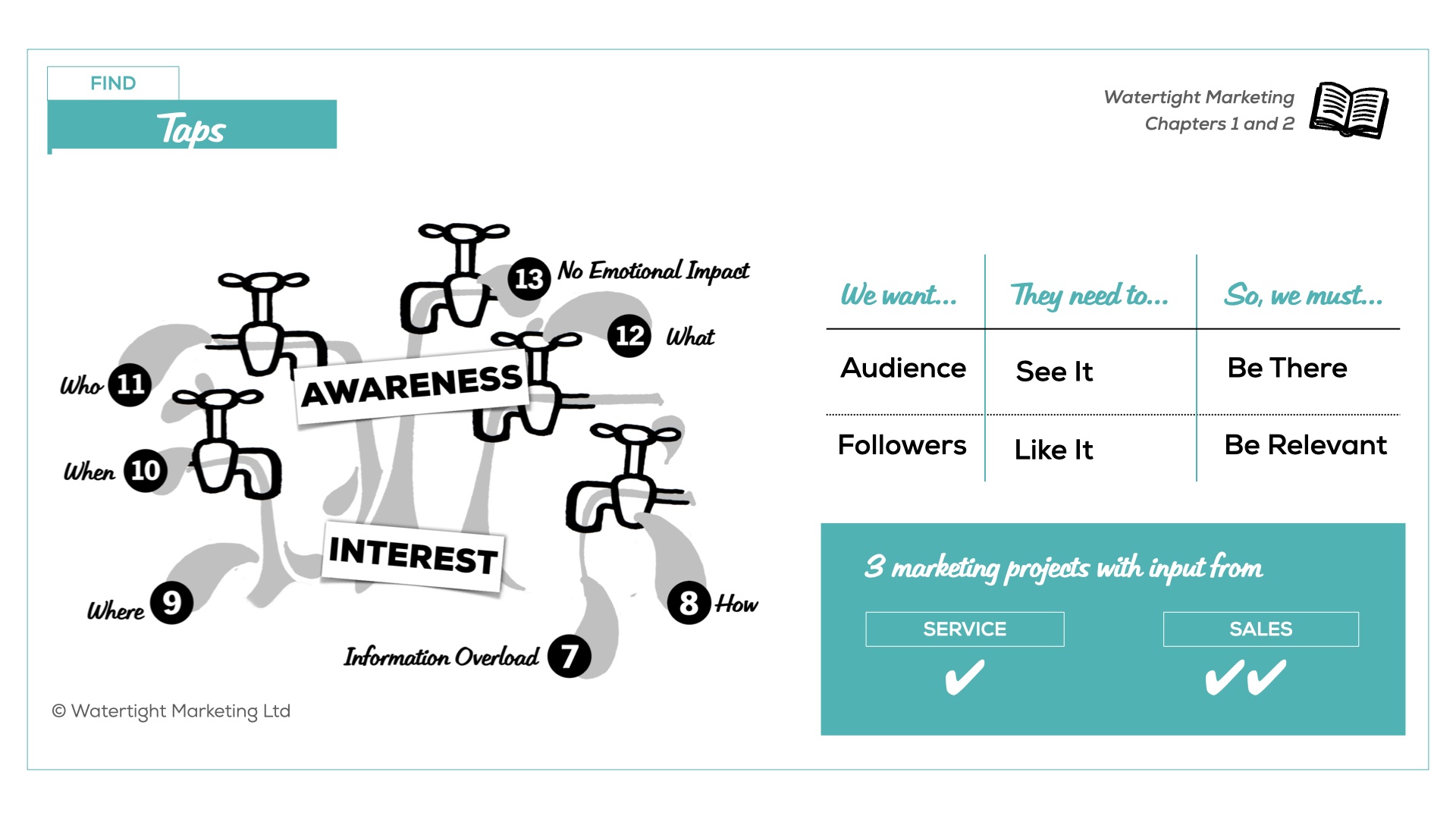
A worked example of the three disciplines working together…
Let’s imagine you have a high value product to sell, and you’ve decided to put on a thought leadership style event to which you’ll be inviting existing clients to deepen your relationship, potential clients to create sales opportunities, and industry thought leaders to extend your reach.
Many people will imagine that this is a job for the marketers. Again, I disagree! It might well be led by a marketer, but everyone needs to get involved.
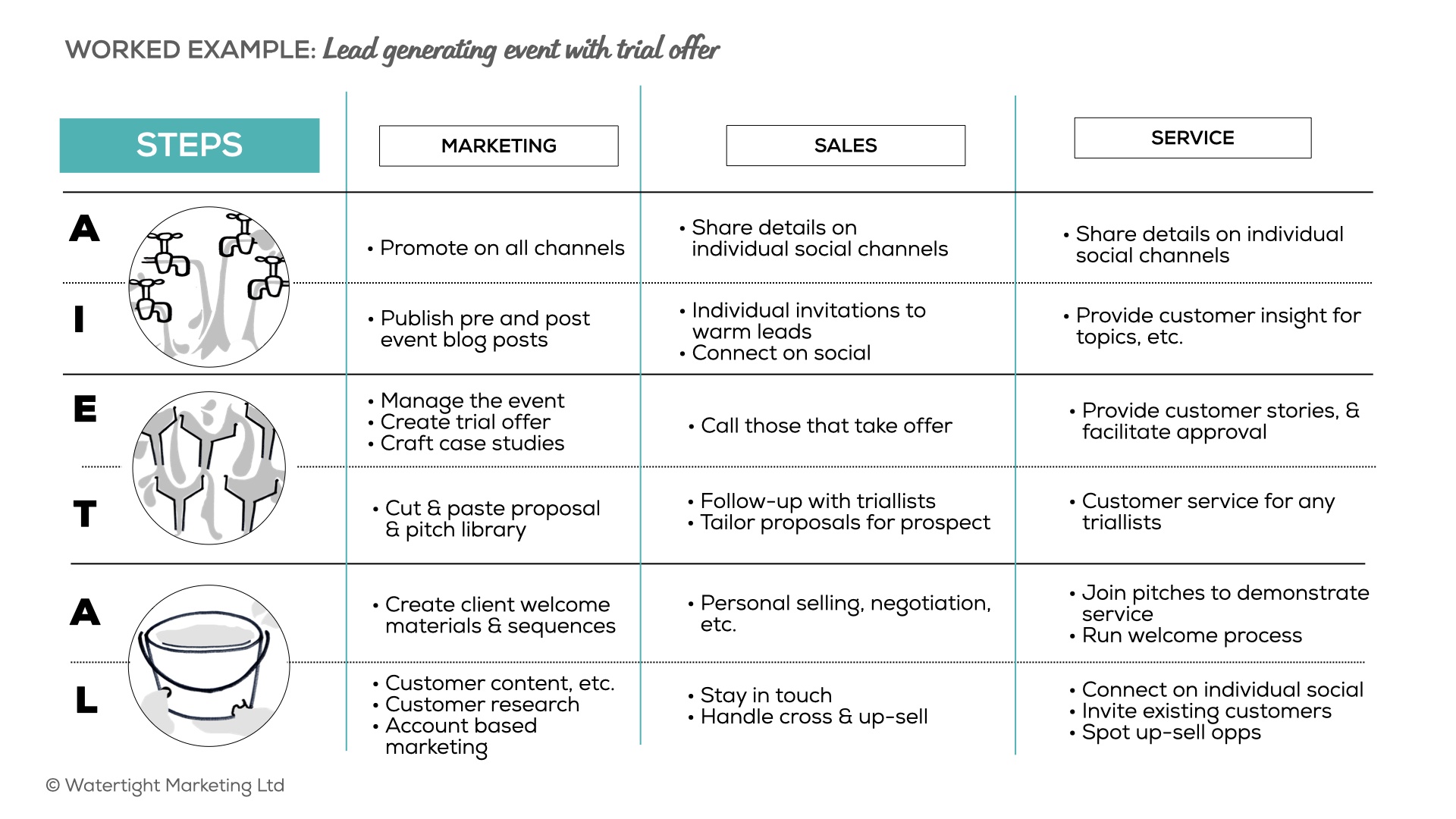
Putting structural walls between the steps in the sales process will lead to disjointed and ineffective customer journeys. If you want healthy sales flow in your business, getting the whole team to plug into ‘journey brain’ and see the end-to-end process as something they are working on together will be far more fruitful.
It’s exactly this collaboration and cohesion that we work with clients to enable in our transformation programmes. If you think this might be what you need, do give us a shout!
By Bryony Thomas, Author – Watertight Marketing
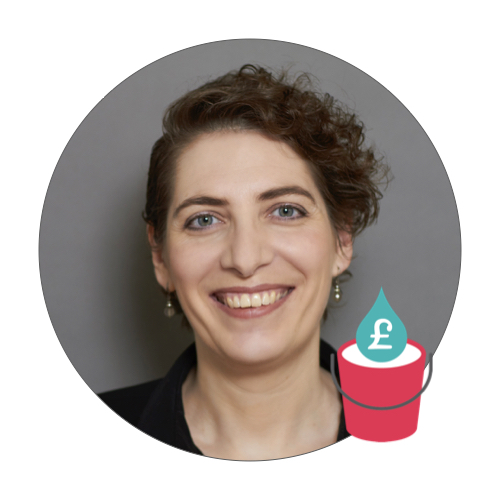
Bryony Thomas
Author & Founder, Watertight Marketing
Bryony Thomas is the creator of the multi-award winning Watertight Marketing methodology, captured in her best-selling book of the same name. She is one of the UK's foremost marketing thinkers, featured by the likes of Forbes, The Guardian, Business Insider and many more, and in-demand speaker for business conferences, in-house sales days and high-level Board strategy days.

